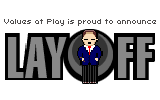Teens and Game Design
I am, I admit, a gloomy person, who spends a lot of time looking at the worst of the world. I am often saved, however, and made a little more hopeful, by the weirdness, creativity, and enthusiasm of kids. Today, in the midst of the financial storm clouds gathering around us, I was able to see some light at a meeting of the Connecticut Innovations Academy (CTIA).
Every year, the Center for 21st Century Skills organizes an Innovation Challenge to bring together Connecticut teens from urban and suburban neighborhoods to collaborate on high tech projects. Last year, the Challenge was to build a video game in MIT’s Scratch program, and build a whole mock company, website, white paper, and marketing campaign to support it. The winners put together a great educational game, but participants complained that they didn’t have enough game design education. This year, the Challenge is basically the same except all game designs will be about environmental issues, organizational kinks have been worked out, and they have dozens of Grow A Game to help spark young imaginations. I went to the program’s first meeting this year to talk to 130-odd students about designing games with values in mind.
I gave a short presentation on VAP and the work we do at Tiltfactor and also showed them a selection of serious games, games made with the VAP curriculum, and popular games that BioShock that tackle big ideas and values in creative ways. Explaining how Portal guns and Big Daddies relate to our work helped break through the perception that putting values in games is like putting lima beans in pancakes.
To follow their green theme, CTIA has modded our Challenge cards to be all environmental issues. After working through a single and double card exercise, we drew one of the new green challenge cards for everyone to make a game about. The students broke into small groups in five different rooms, with everyone using overpopulation as their issue, and then each group drawing its own Game and Action cards. After a half hour, the groups presented their games, and then the best game from each of the rooms went on to present in front of all the students. I ran around between the groups, helping out when the groups were stuck, but also letting the very competent CTIA staff do their work with the groups.
Watching the groups as they worked through their game designs, I was proud to see the Grow A Game cards working, once again, to help give non-designers the confidence to start designing. The students, like everyone I’ve seen in our workshops, were hesitant when they began, but grew more and more confident, generating increasingly interesting ideas until they found the ones they liked.
There were also, of course, ideas that veered wildly off course. To tackle the issue of overpopulation, some students designed games about sending people to other planets, or shooting people, or (coupled with the action “voting” and the game Gran Tourismo) voting on who to kill with car bombs. Seriously, that one freaked me out a little.
Other students, however, were usually quick to point out that these ideas didn’t really fix overpopulation problems, and were dangerously anti-social. Listening to the students made me realize how deeply ingrained the -isms on our challenge cards (colonialism, racism, etc.) are. These students saw nothing wrong with the fact that some of their game ideas promoted genocide or colonization as a solution to overpopulation, or implanting chips in people’s (aliens’ actually) brains to make them be nice. The exercise was certainly successful at bringing these beliefs to the surface, and I’d like to develop workshops where we could then process these beliefs and work them out through iterative game design.
The best ideas were (thankfully) brilliant. One involved a Tetris game where you build houses for poor populations, completing more complex designs to raise living standards higher. My favorite design was Pacutopia, a game where players (as mayor Pac Man) clear land for development by eating dots, but must be careful to balance growth with the needs of the environment. Successful players would create healthy cities, with controlled expansion. There are levels, but no ending, because as one designer said, ““in life you can’t get rid of these problems forever. As you increase in stages the problems get harder, and faster. Just like in life.” Yes! Thank you Gonzolo Frasca Jr.!
Overall, the day, and the kids were inspiring. We’ve got some serious problems in this world, and as the Albert Einstein quote on the back of the CTIA brochure reads, “We cannot solve our problems with the same thinking we used when we created them.” These kids, and all the others like them being educated with games, networks and technology are learning to look at the world in new ways. They’re learning to think about how elements in systems work together, instead of just seeing disparate people and nations and problems.






